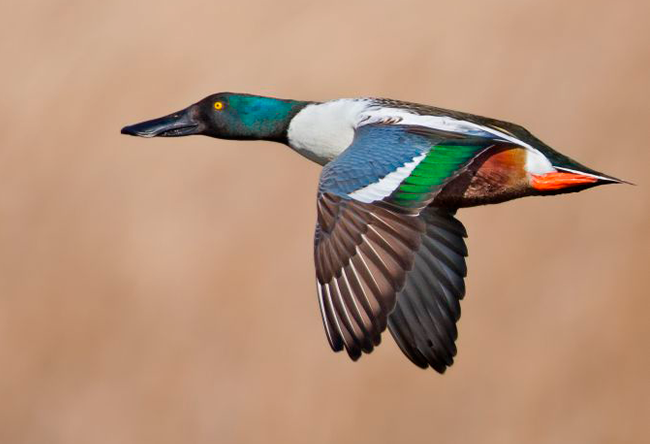It is possible to recognize 3 different ages:
1st year specimen: male, the tertials and tertiary coverts are brown, narrow and pointed, with a white margin on the outer beard, shorter than in adult male specimens. On the other hand, the mirror is like that of the adult male, but with a duller shine. Median and lesser coverts are narrow and of a faded blue color. Greater coverts are narrow, usually with dark spots on the inner beards and a wide clear margin. Gray-brown iris. 1st year, female with tertials and tertiary coverts brown, narrow and pointed, with brown-white margin on the outer beard. Mirror like that of adult female. Median and lesser coverts narrow, with only a slight blue tinge. Greater coverts are narrow, with weak dark spots on the inner beards and narrow white margin. Brown iris.
2nd year specimen: both sexes resemble adults. These specimens are recognizable by retained juvenile feathers. The male acquires the yellow tone of the iris throughout the winter.
Adult specimen: the male in unmistakable nuptial plumage with a bright green head. Intense green mirror on all secondaries that have a narrow white tip of 1-2 mm or all black tip. Clear blue median and lesser coverts without pale edges. Long and pointed tertiaries, black with green tinge on the outer beard and white on the inner beard. Wide and with a wide white tip on greater coverts. Yellow or golden iris. Light brown adult female, with dark mottling. Green mirror without shine. Median and lesser coverts pale blue or gray-blue with cream-white edges. Long and brown tertiaries with pale ante-colored tips on the outer beard. Greater coverts wide and with a white tip. Brown iris.
The Northern Shoveler performs a complete post-nuptial molt, acquiring the eclipse plumage, which is usually finished by the end of September. The post-juvenile molt is partial and usually ends in October. Both age classes have a partial pre-nuptial molt in which they acquire breeding plumage.


